“Attenti al cane” warns a sign on the front door for the presence of a fierce Doberman. But photographer Sanne Peper and graphic designer Michaël Snitker are no dog owners. The sign however works, according to Peper. Clubbers looking for a place to urinate ceased to stop here. Their apartment is situated in the middle of De Pijp, a popular neighbourhood just south of the Amsterdam’s city centre. The area counts numerous cafés, restaurants, second hand shops, and is home to the largest outdoor market of the city.
The minimal interior of the apartment, which doubles as Peper’s studio, contrasts strongly with the chaotic, bike-filled, and sometimes rundown streets of De Pijp. Unlike the dim basement apartment, Michaël’s studio just off central Dam square is flooded with light. Over espresso and chocolate-filled bread, we talk with Michaël Snitker and Sanne Peper about Hiroshima, the importance of space, hourglasses, and studying cross letters.
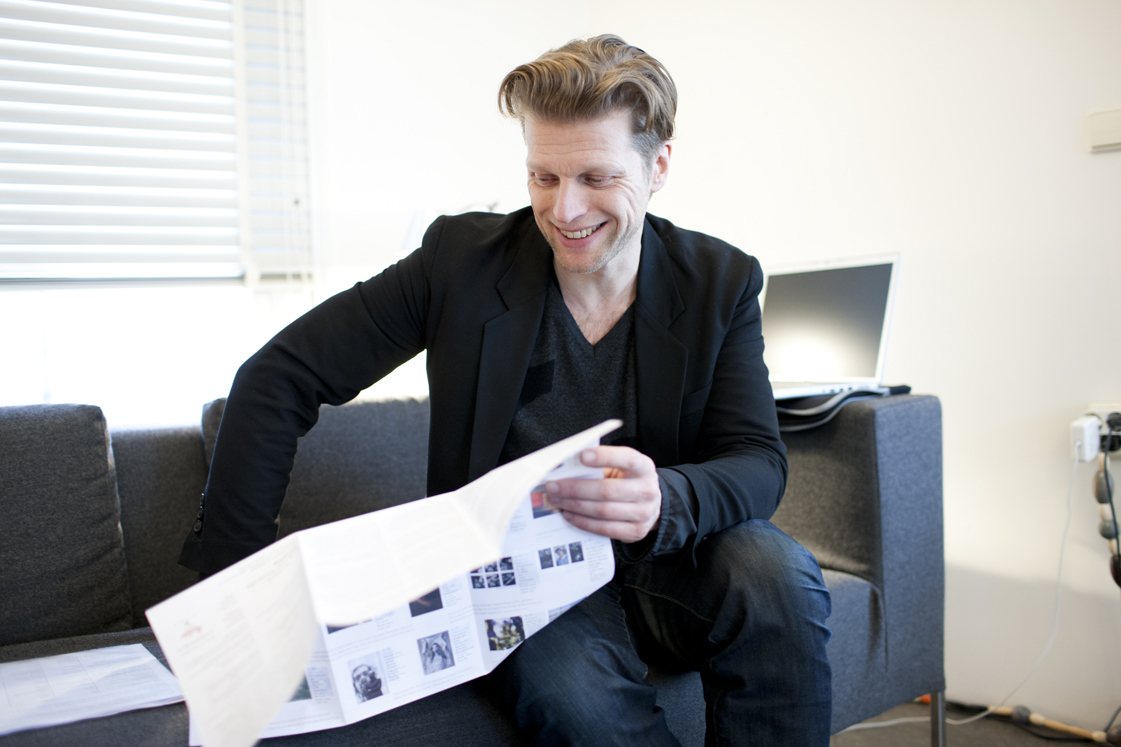
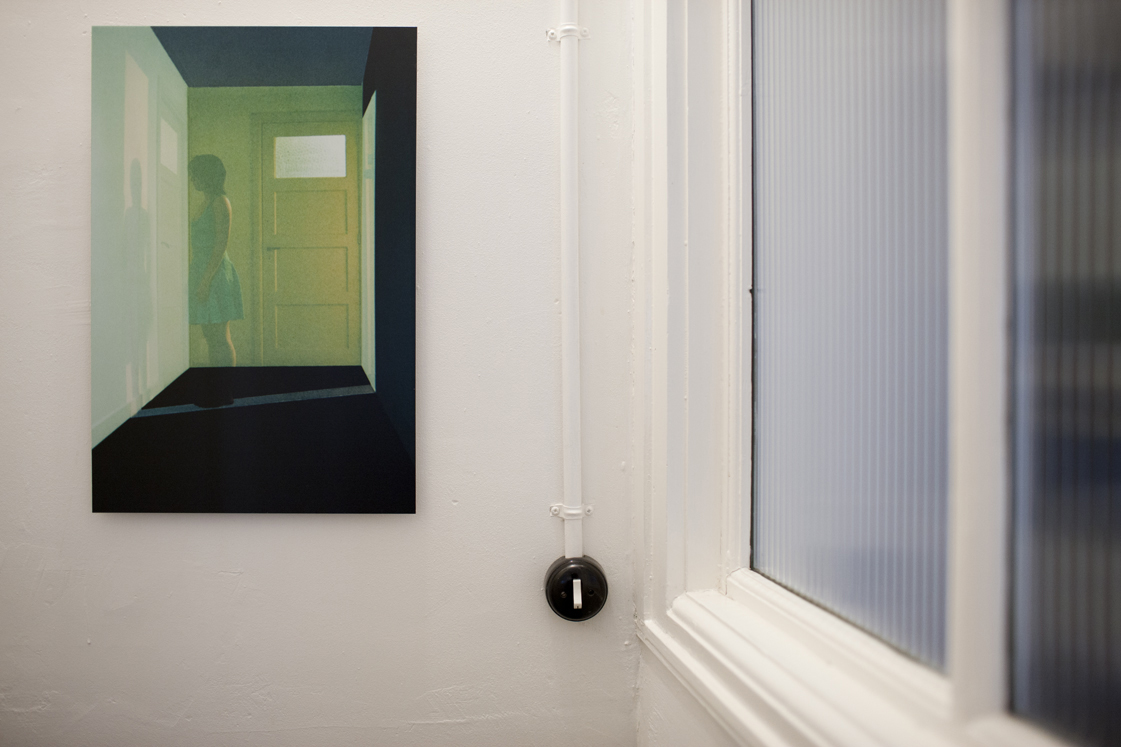
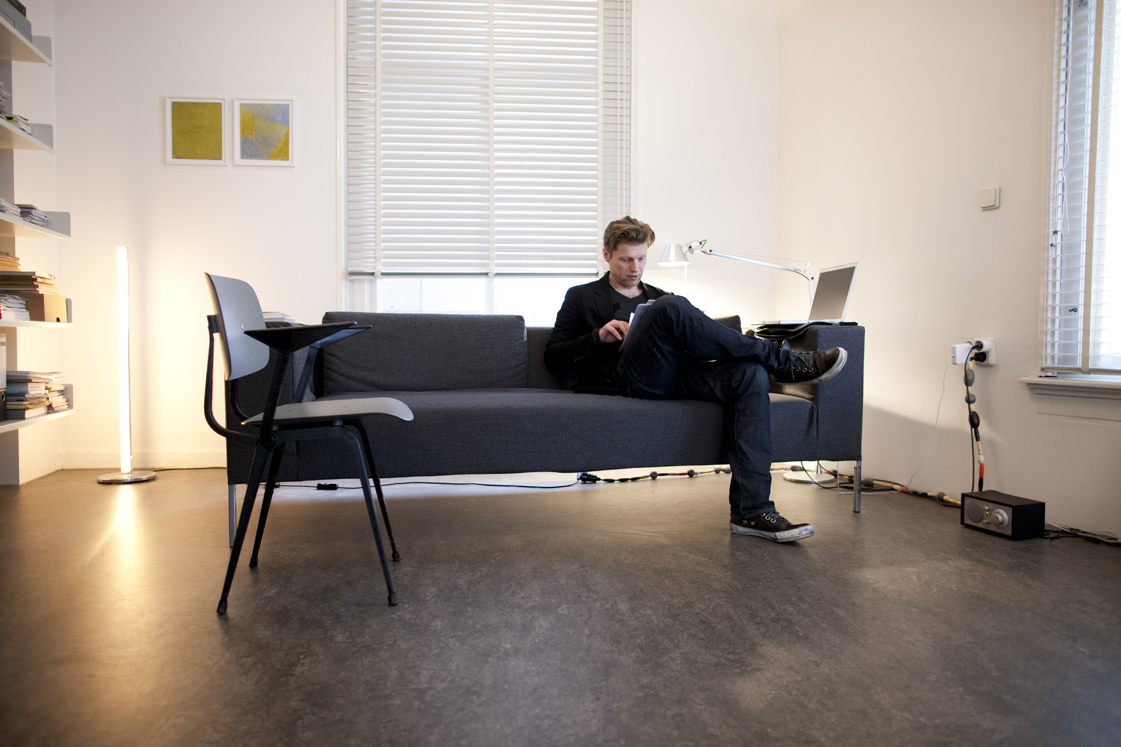
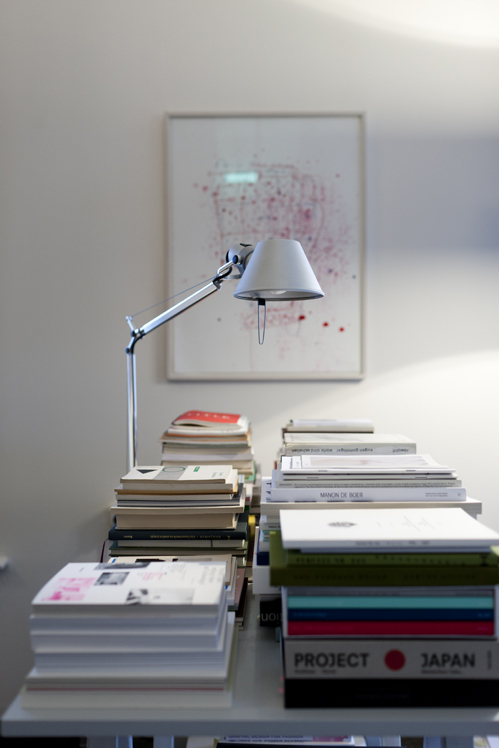
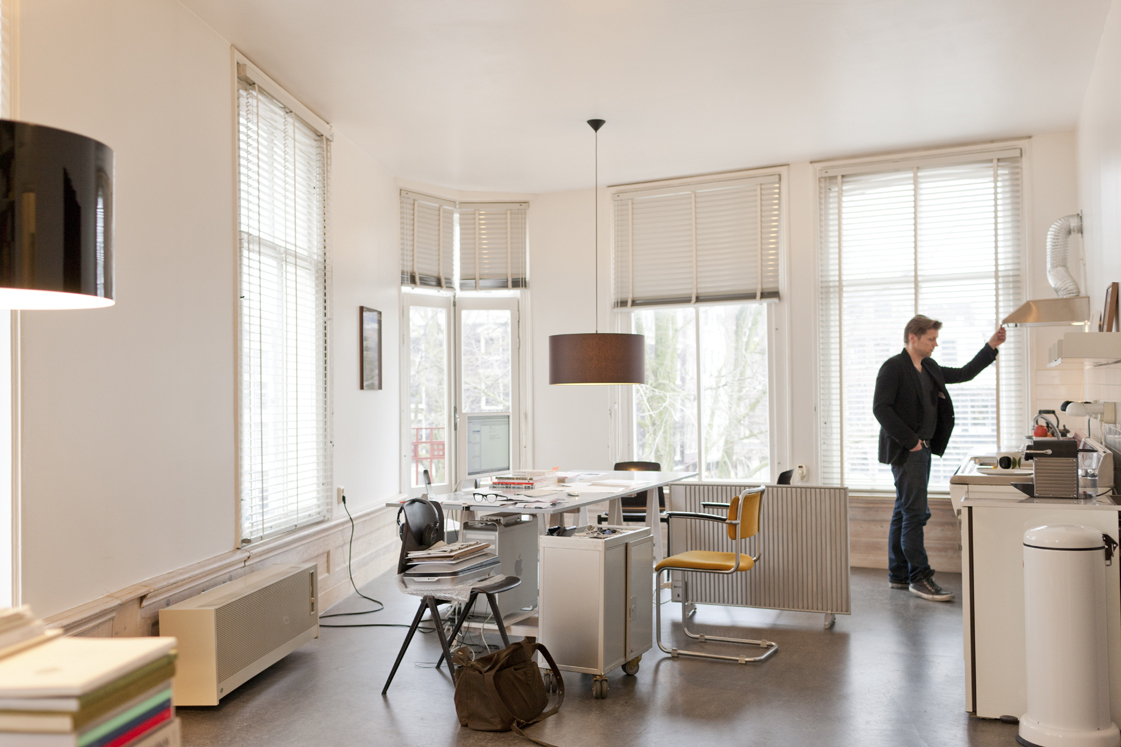
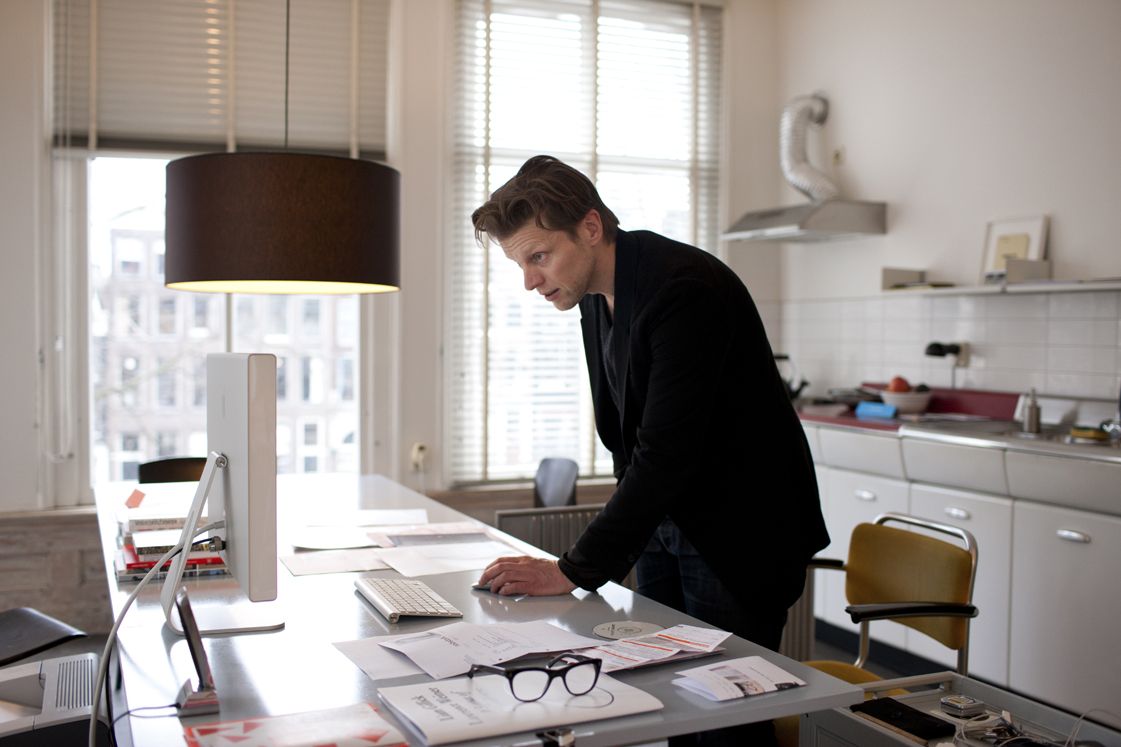
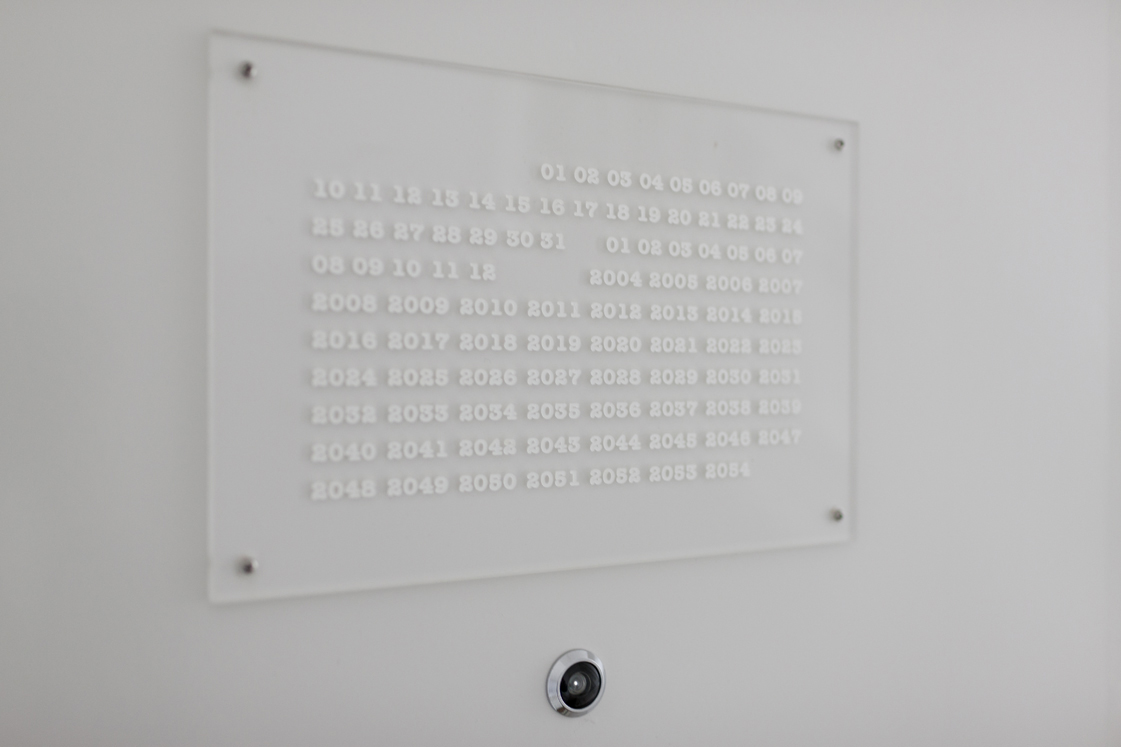
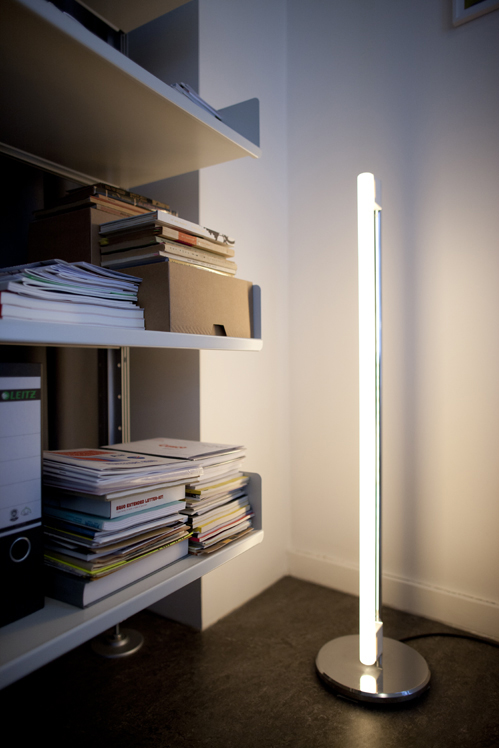
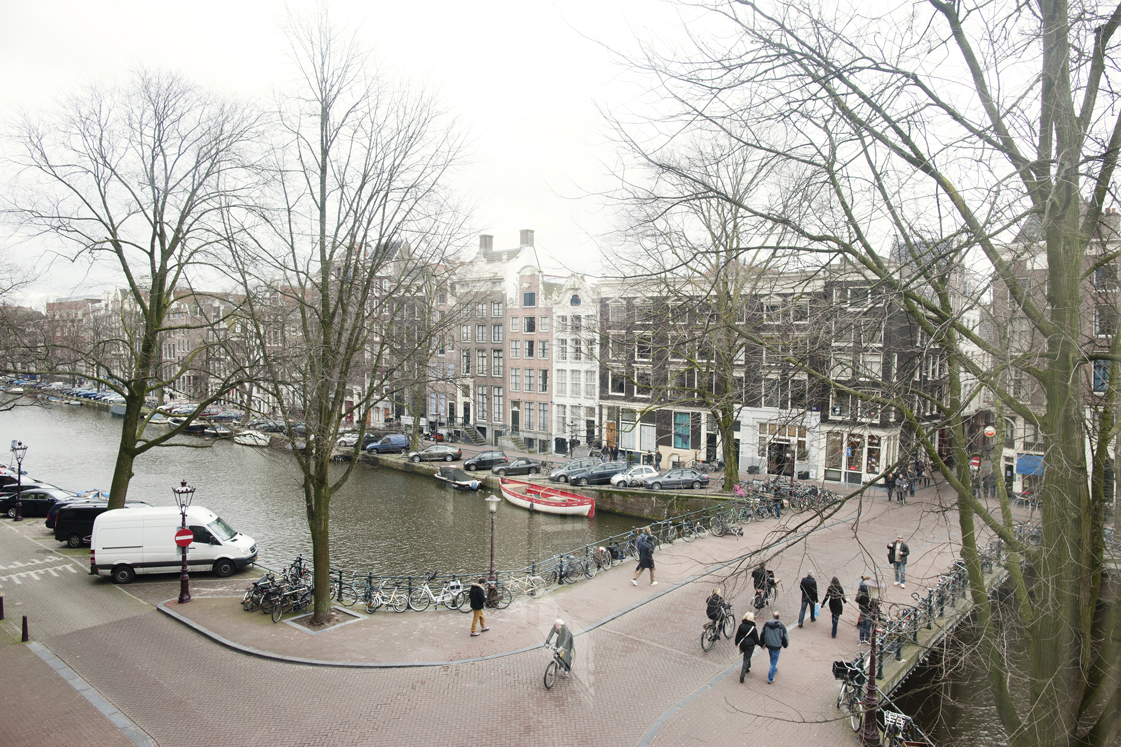
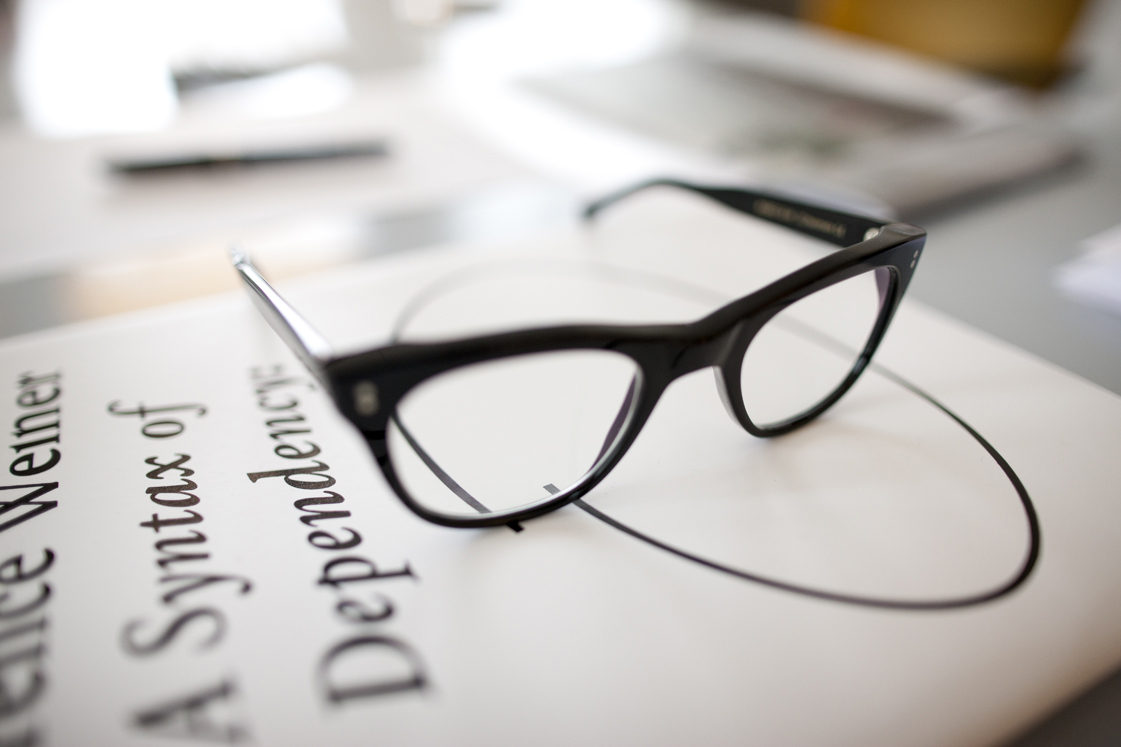
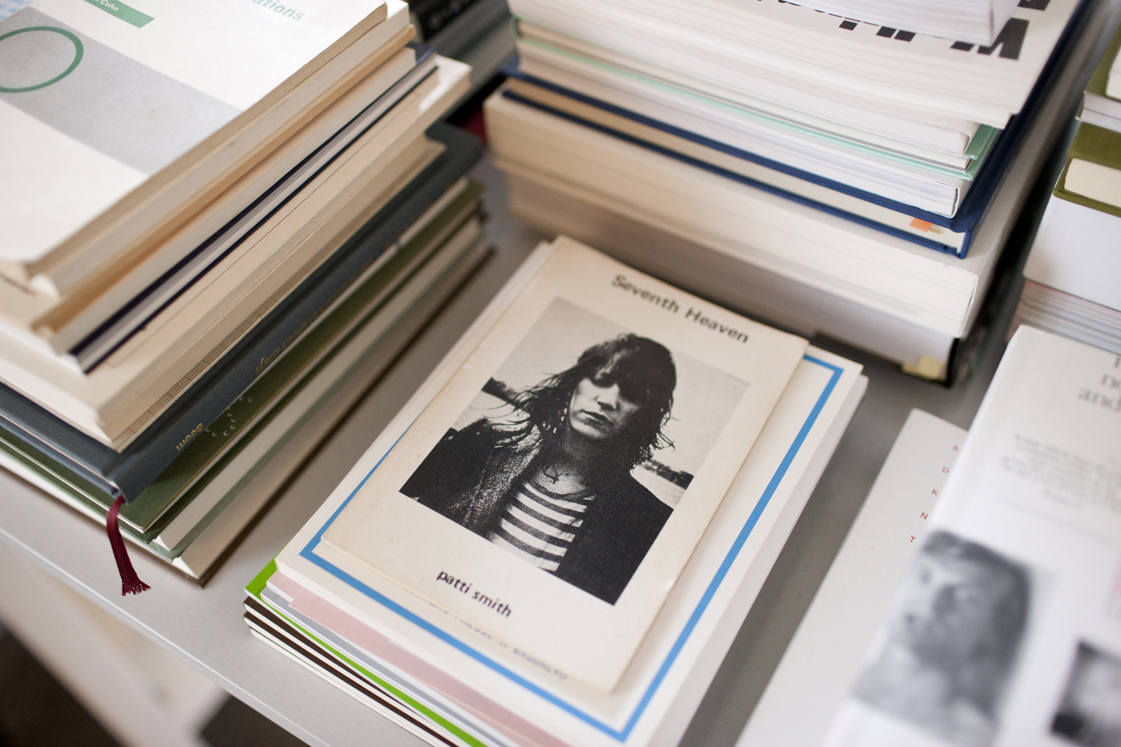
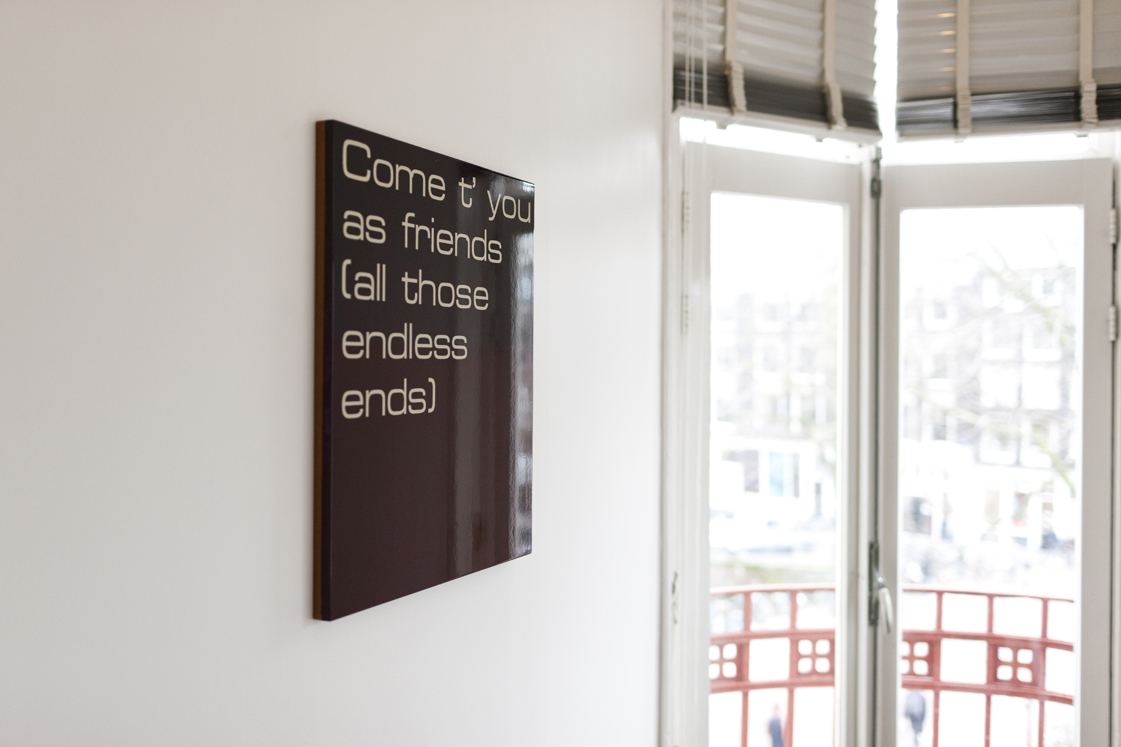
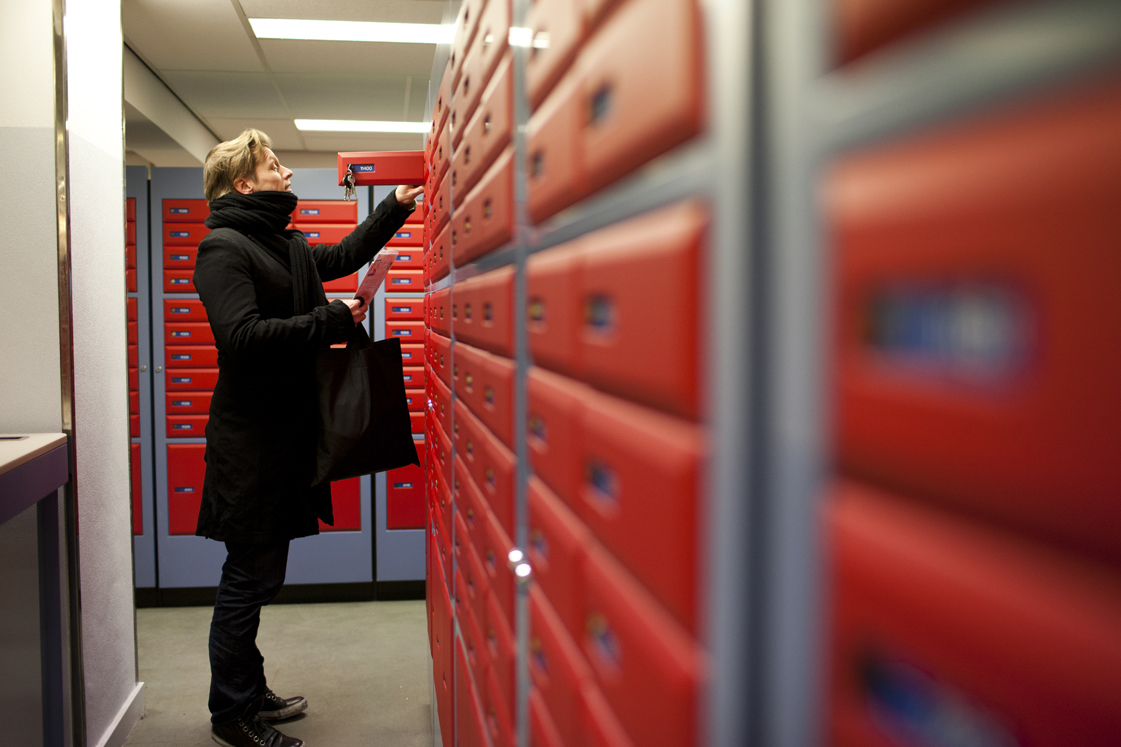
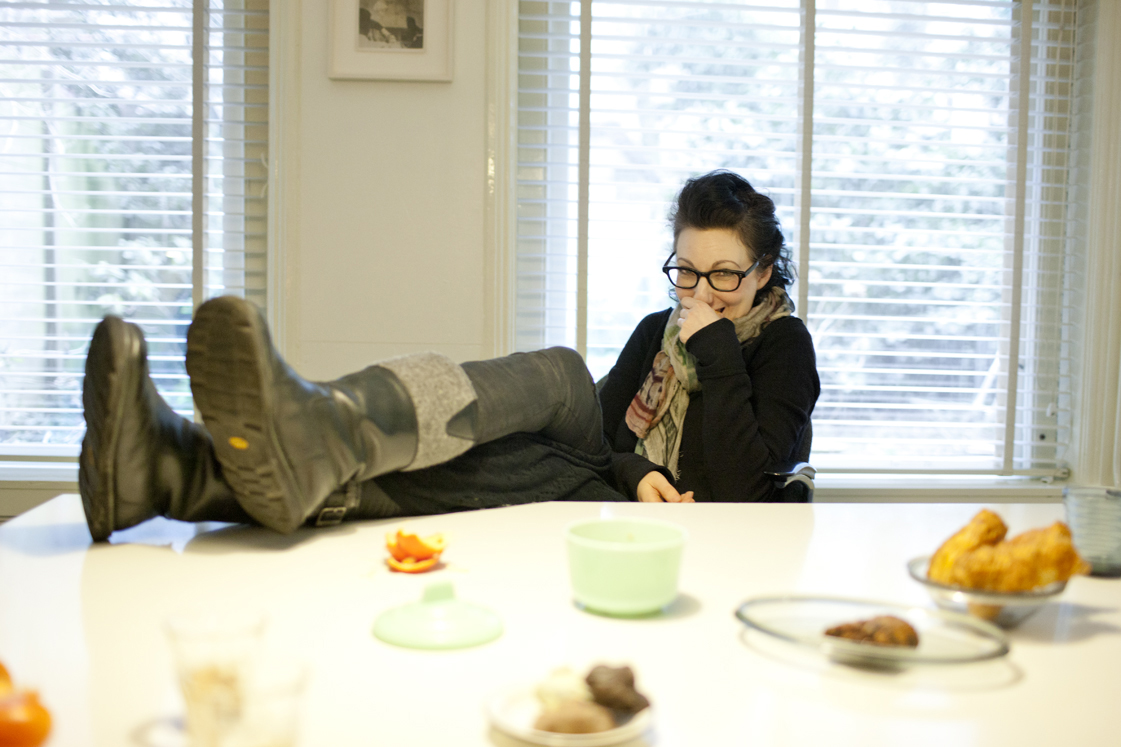
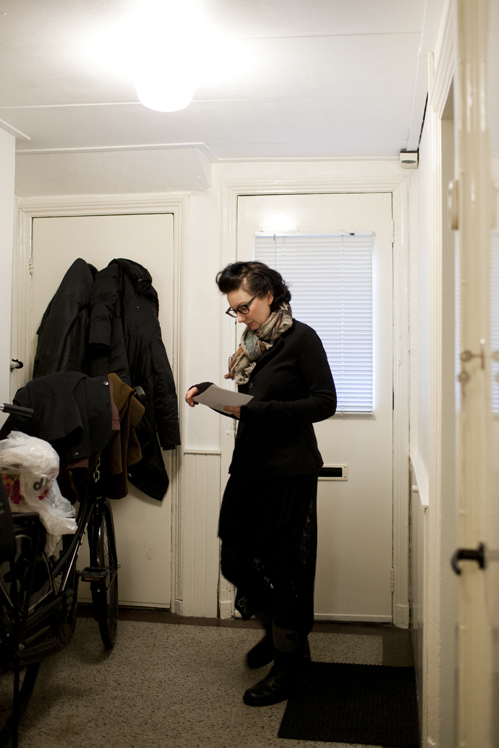
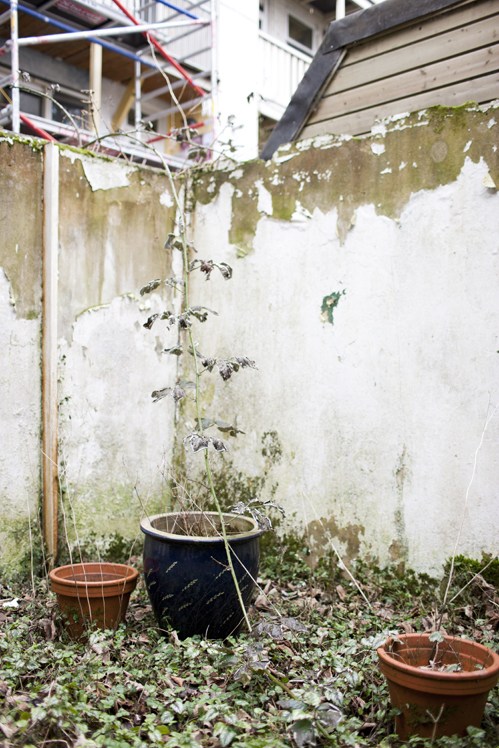
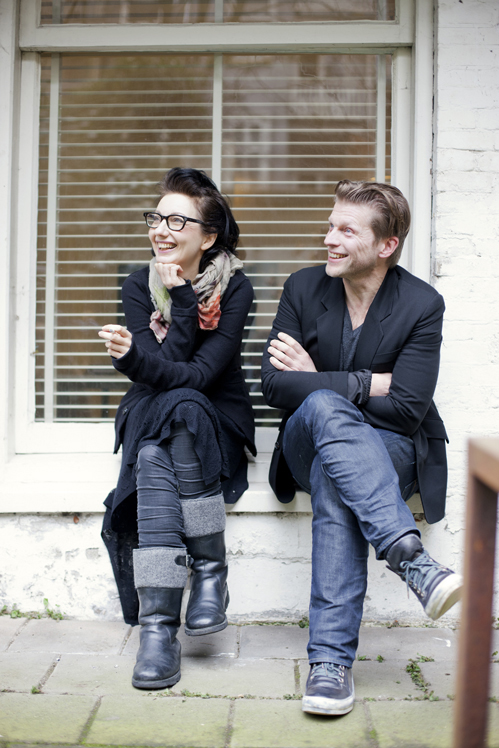
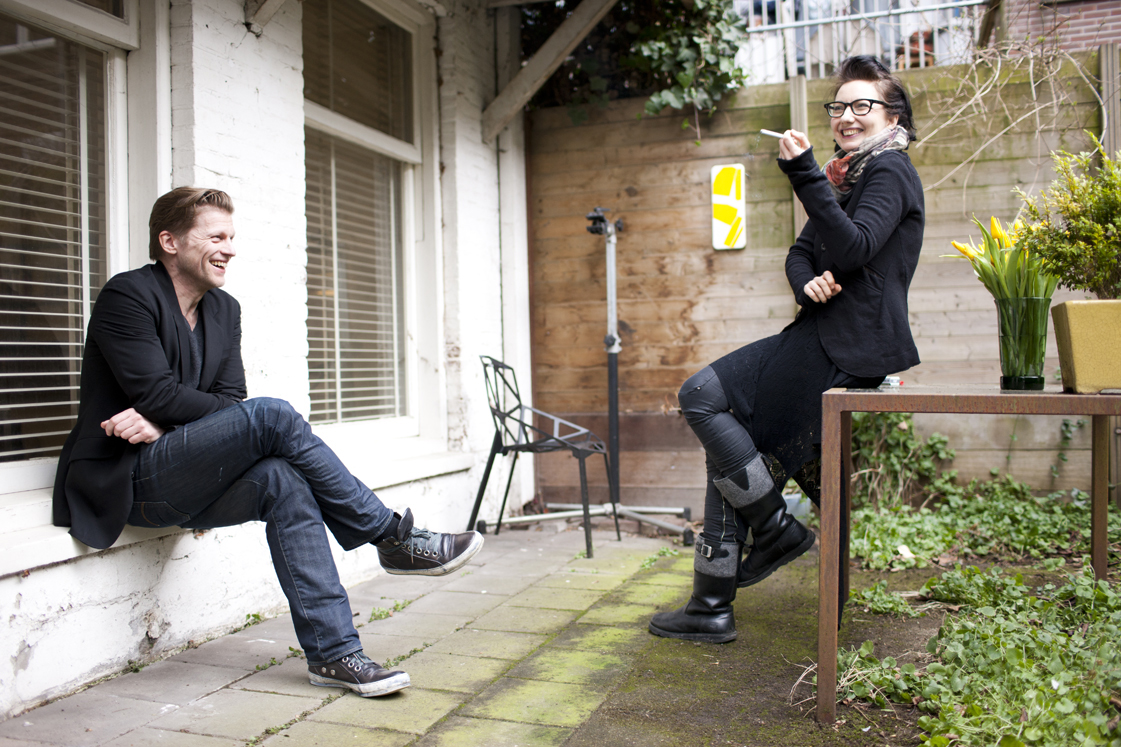
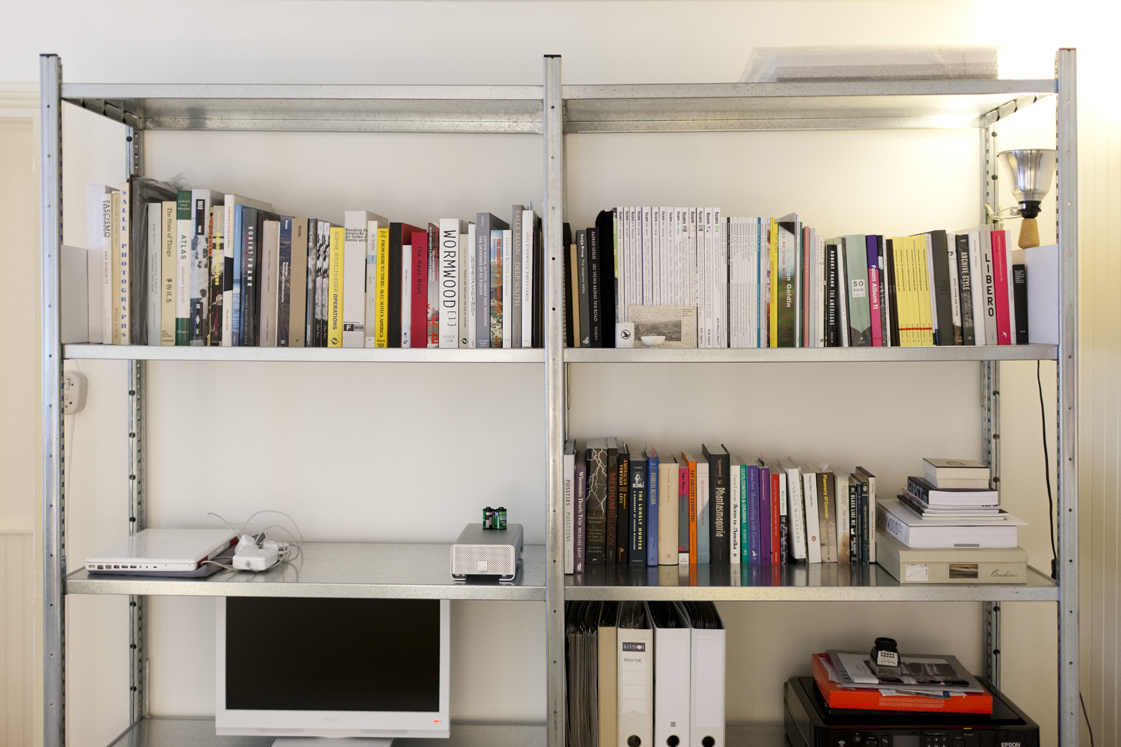
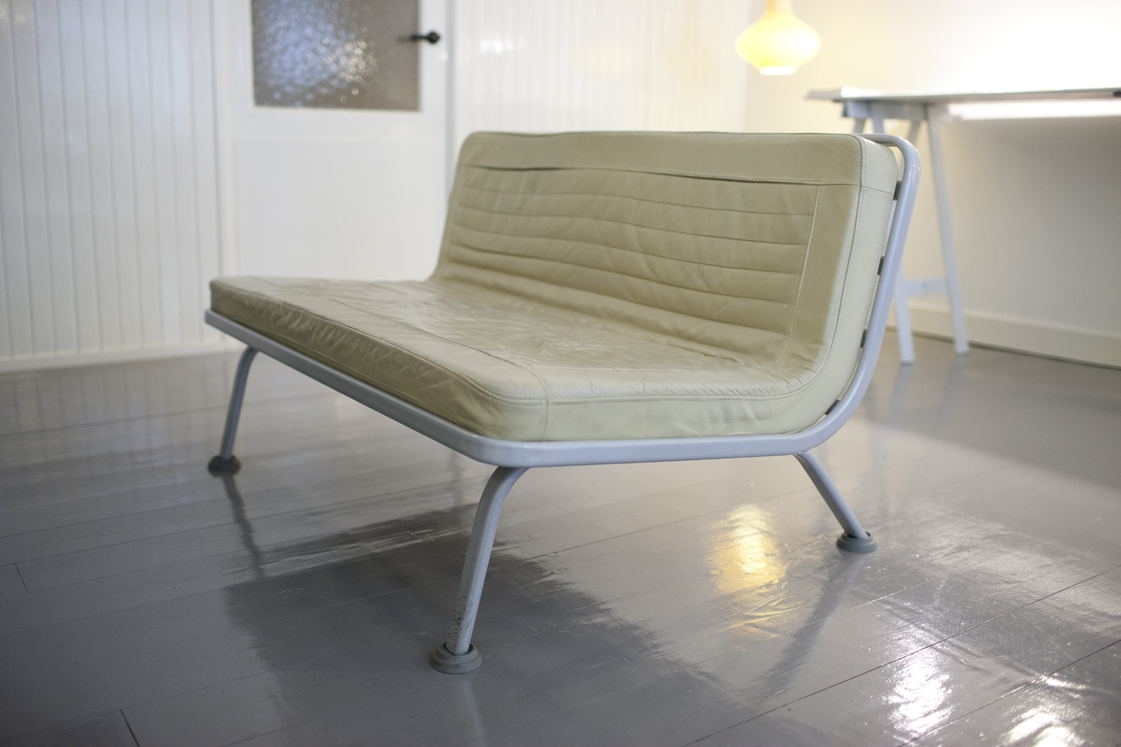
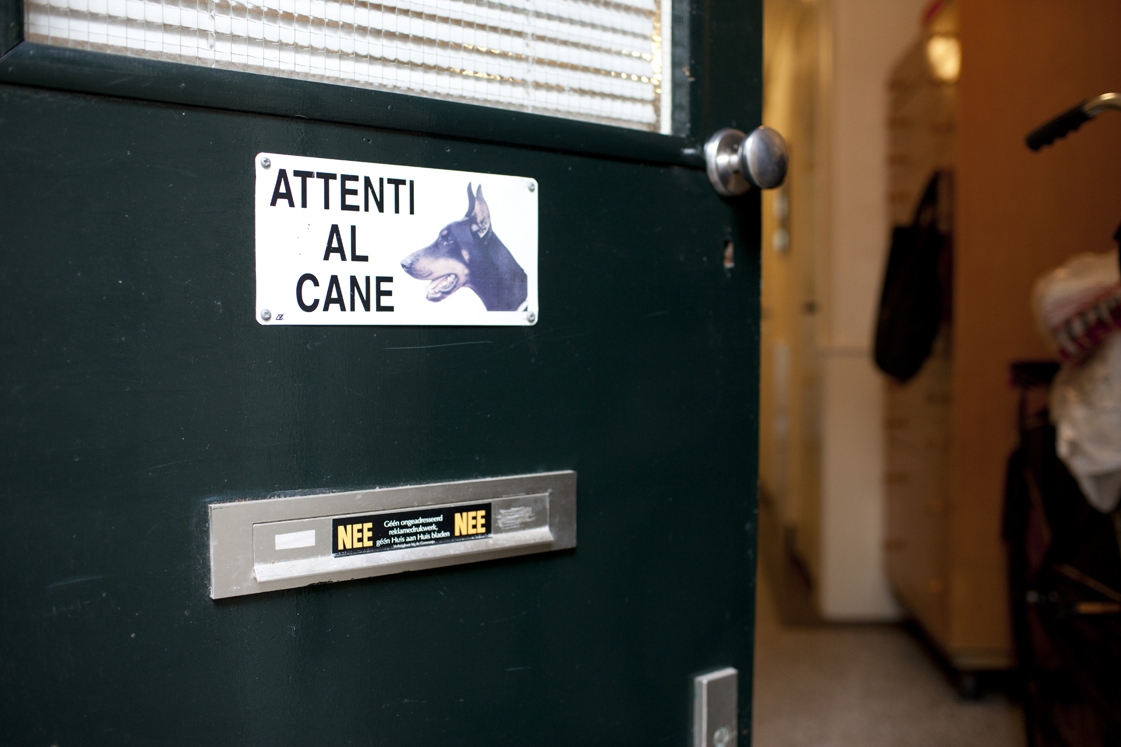
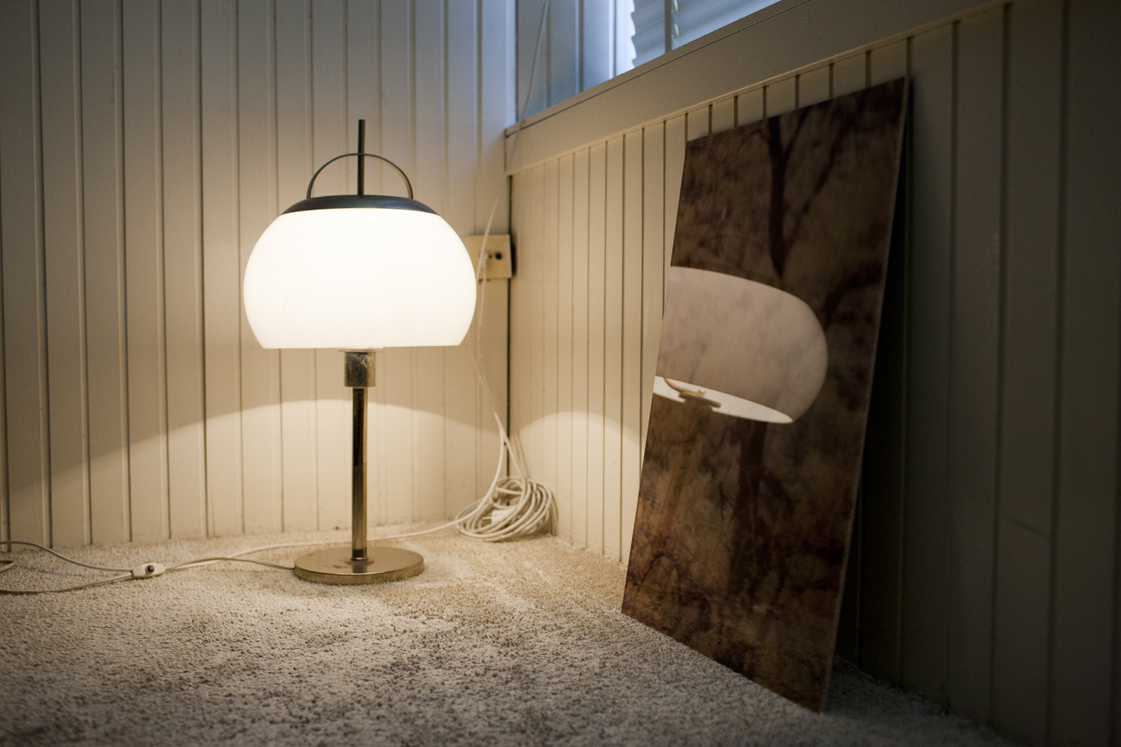
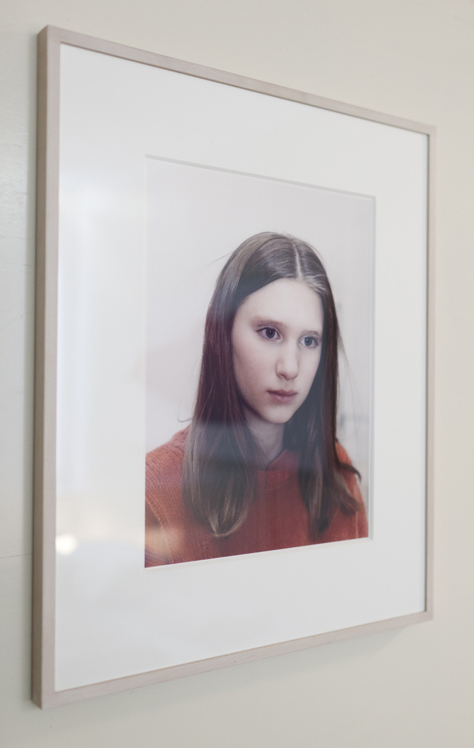
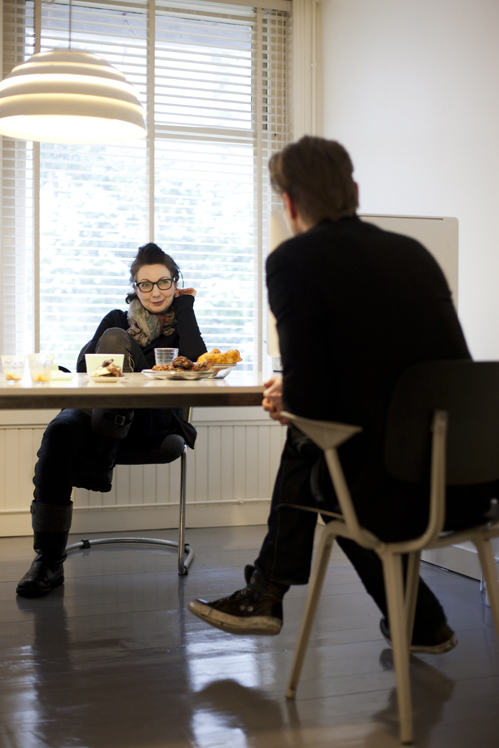
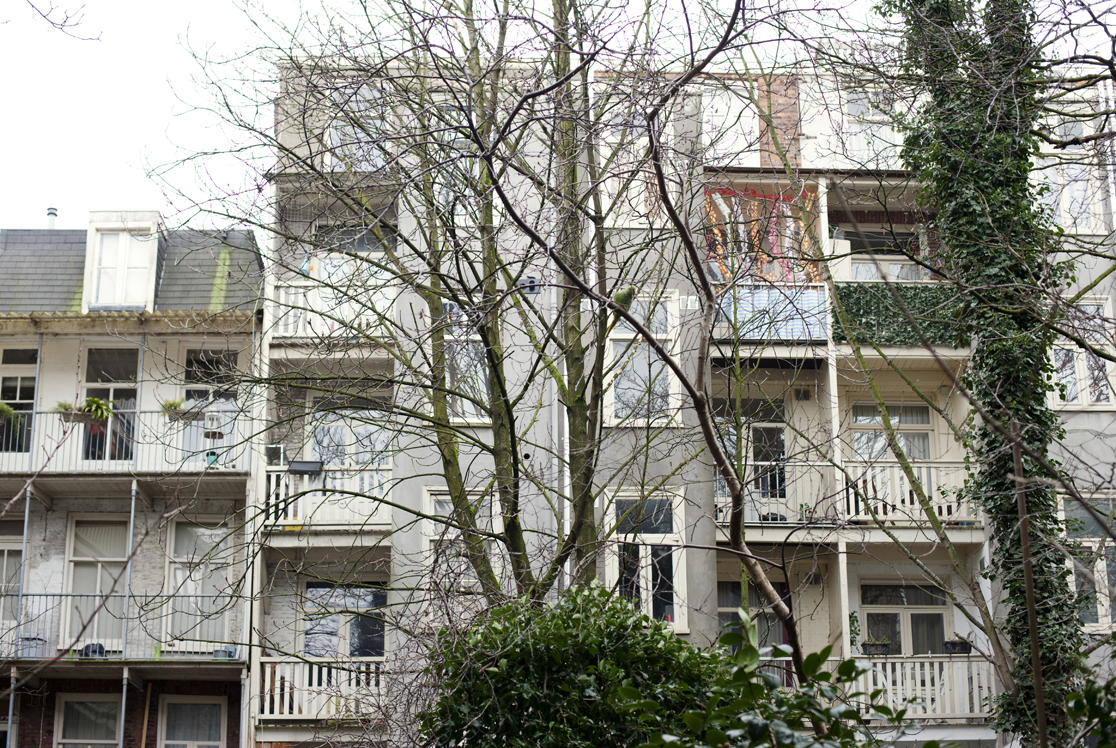
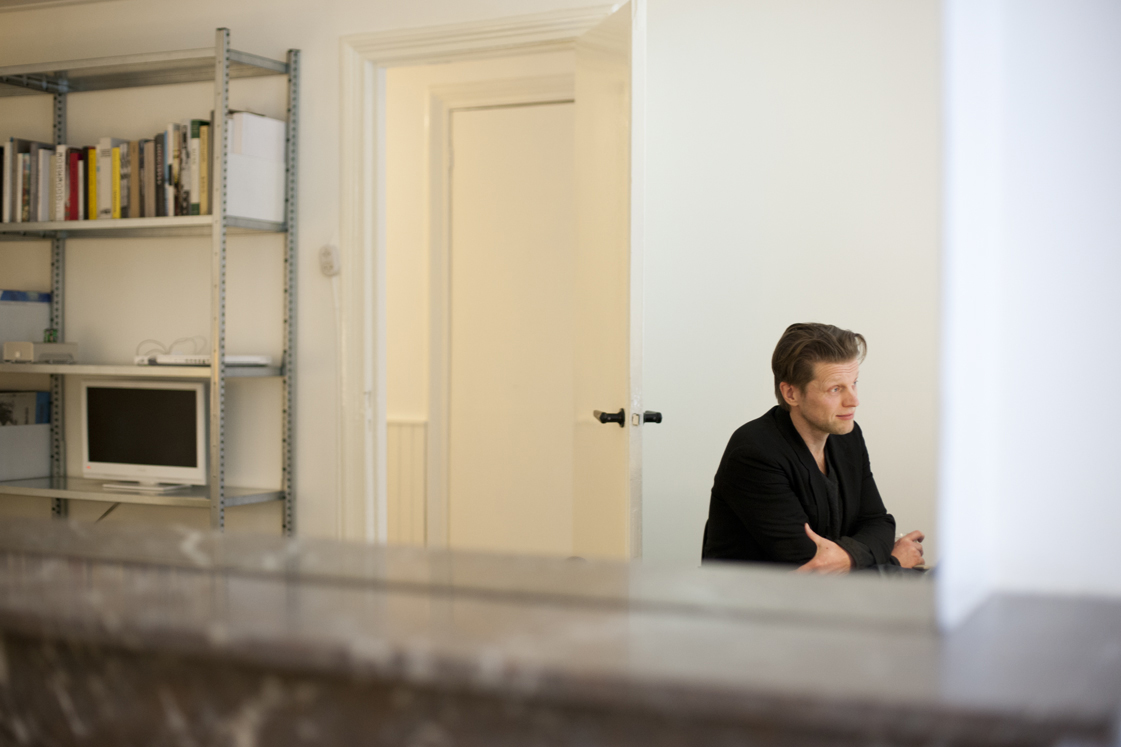
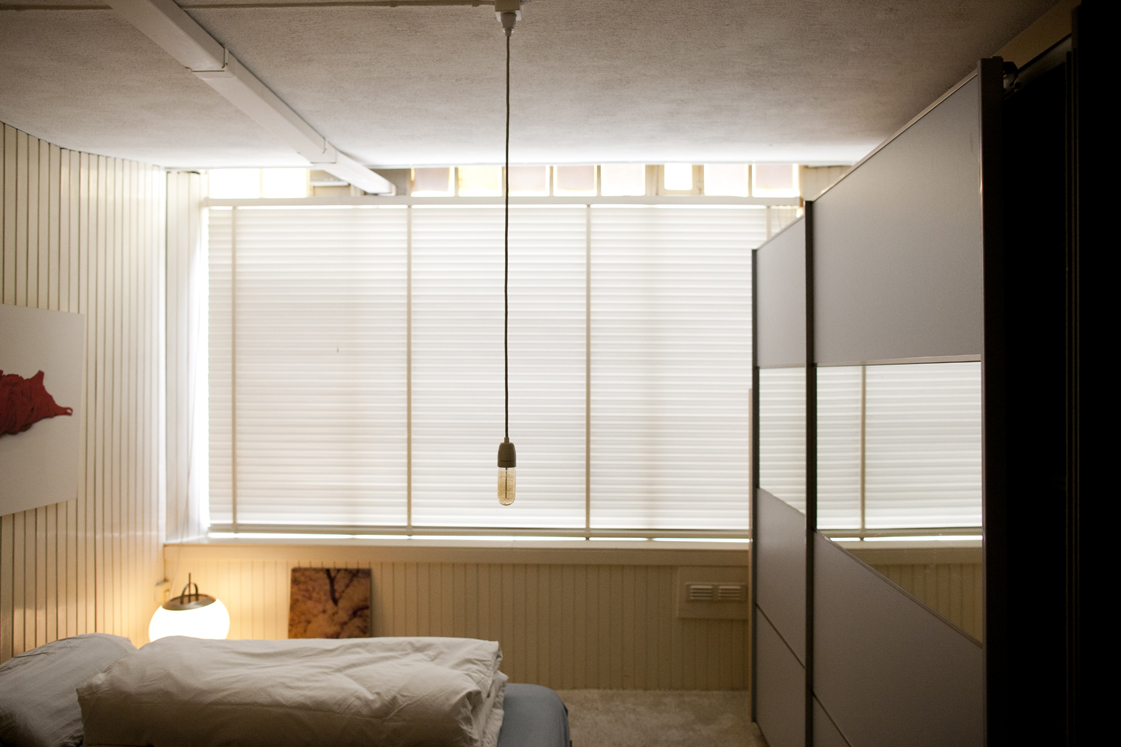
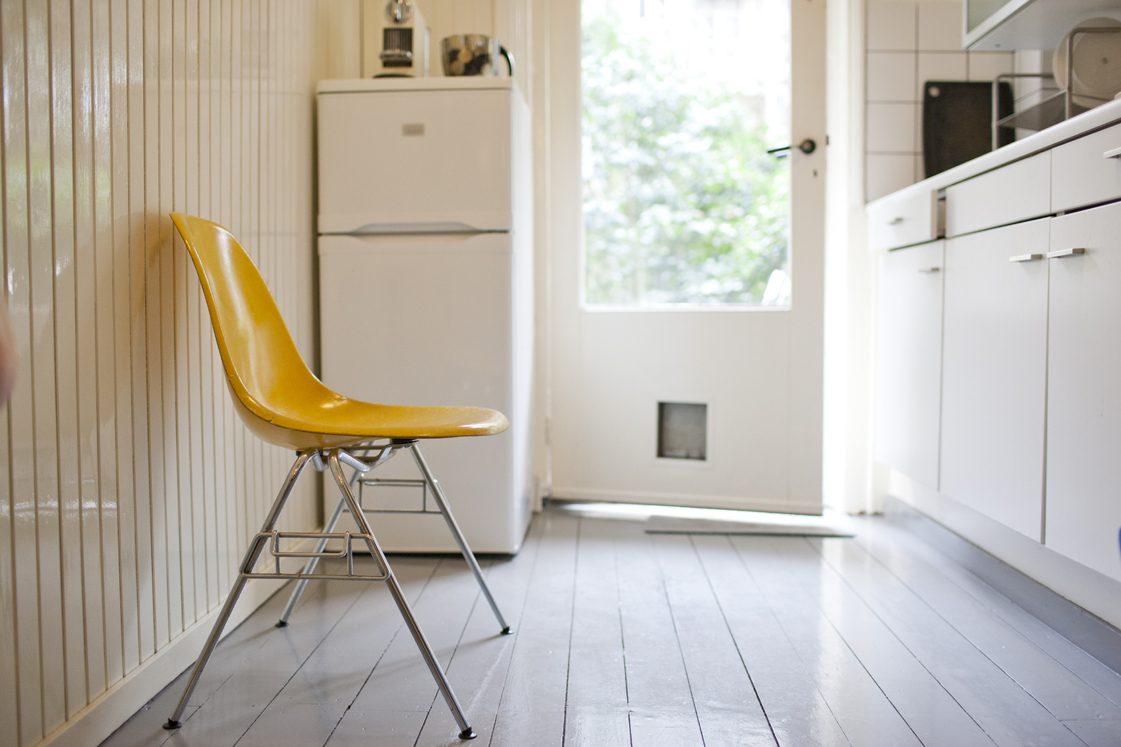
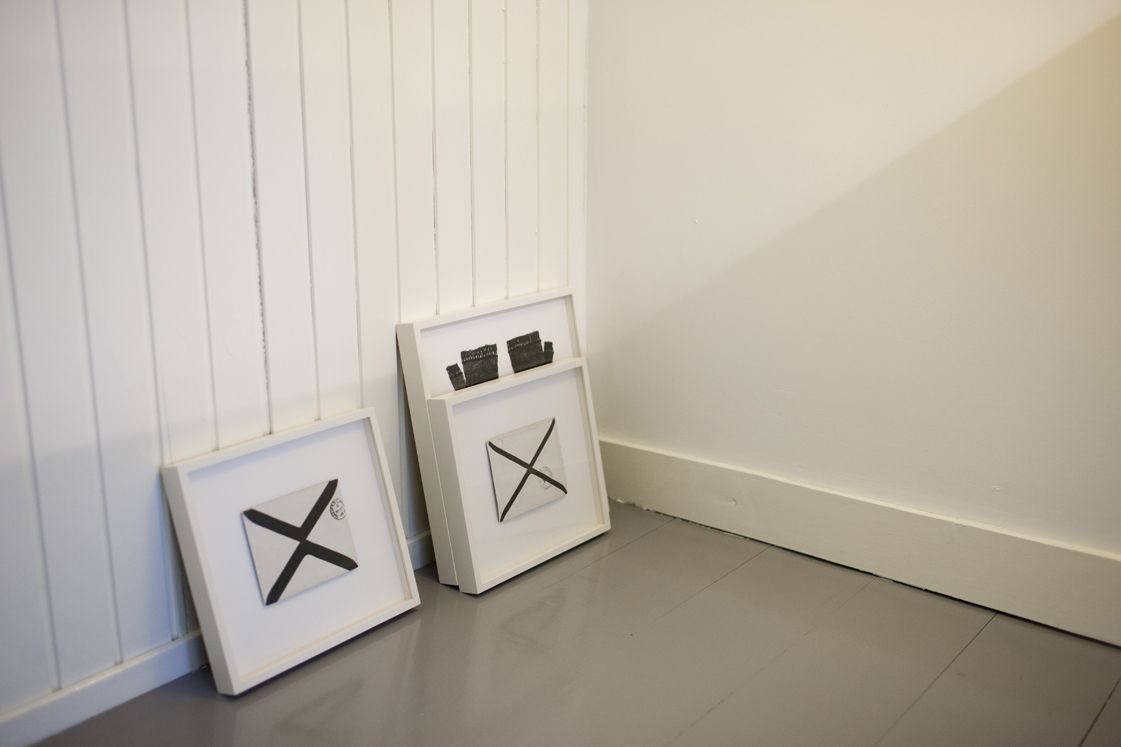
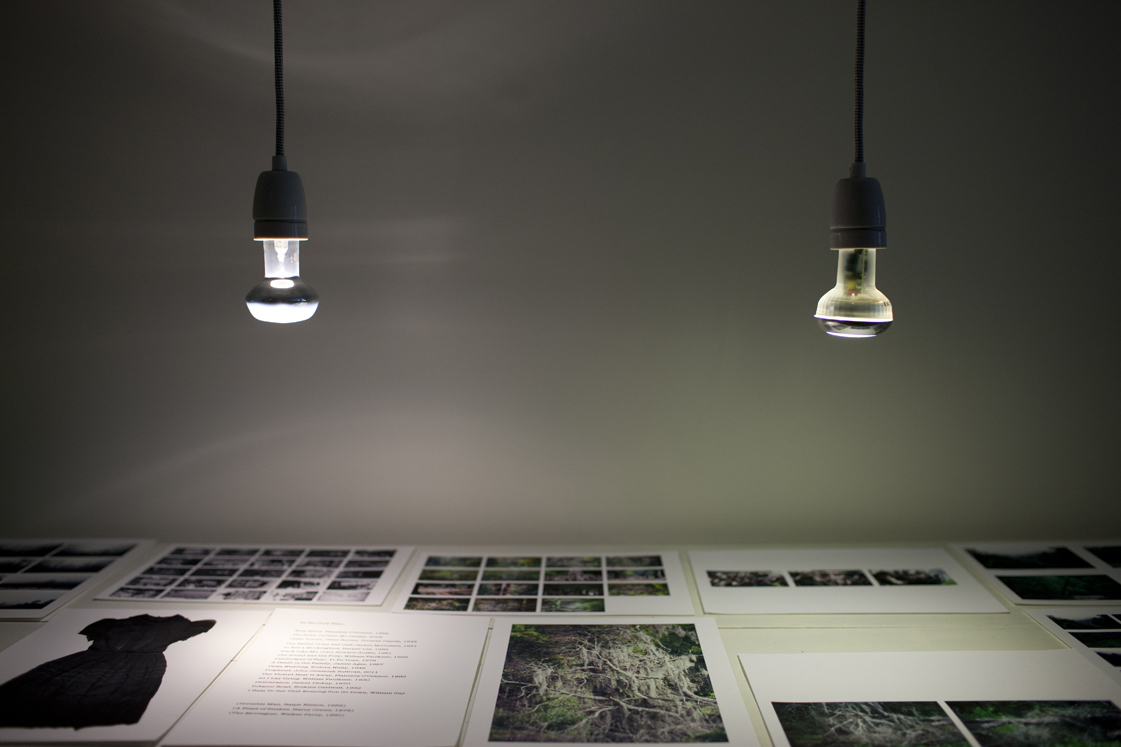
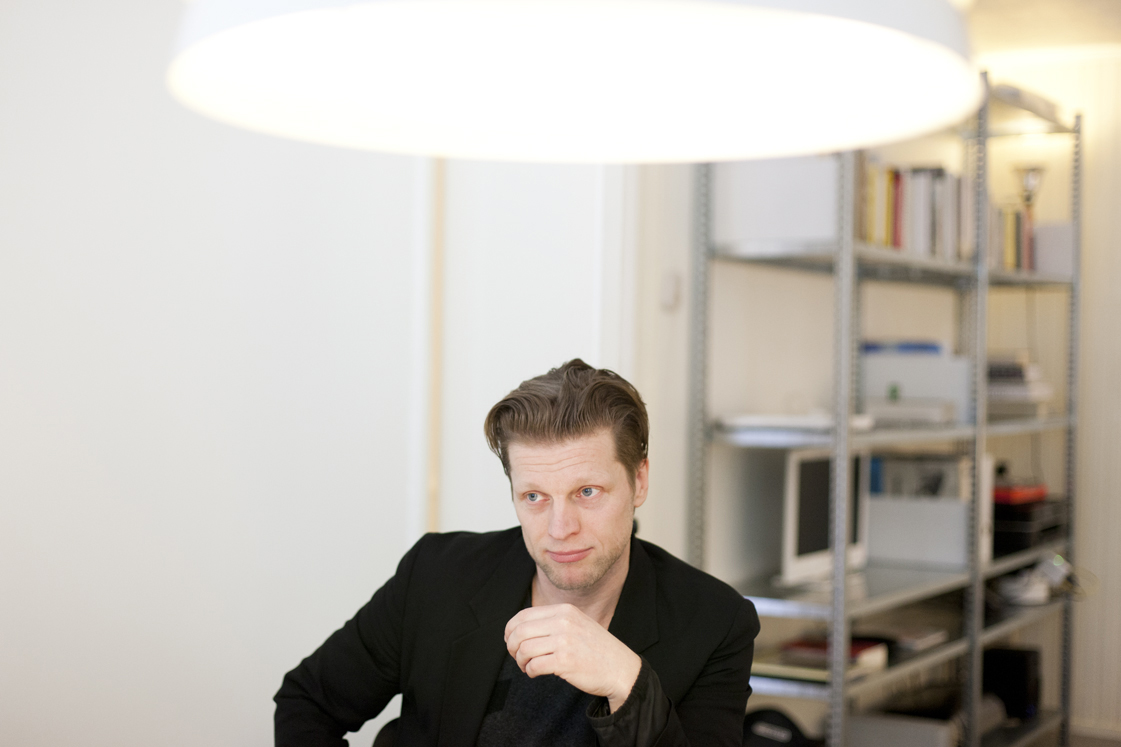
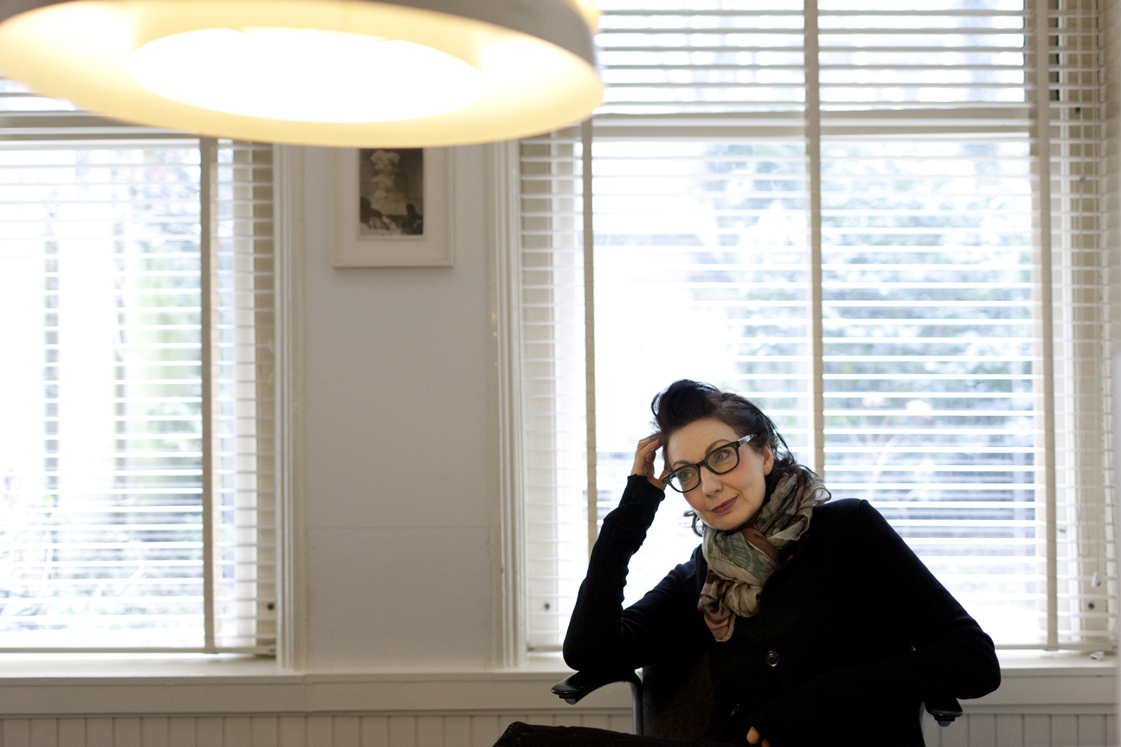
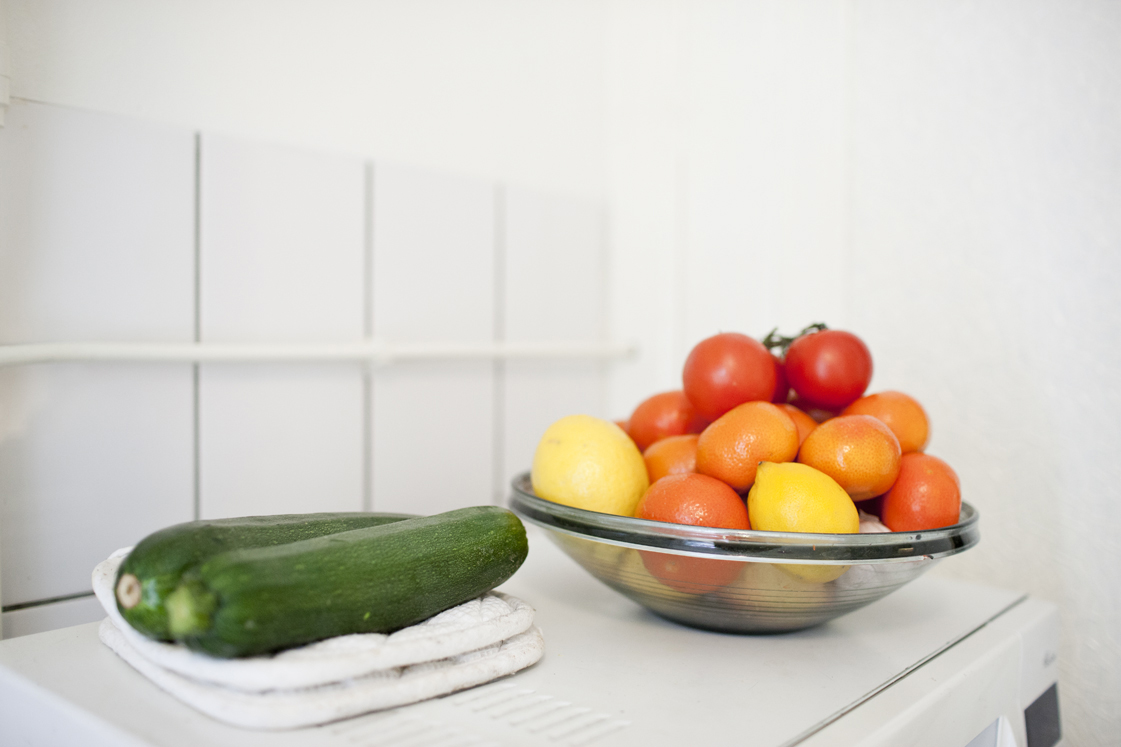
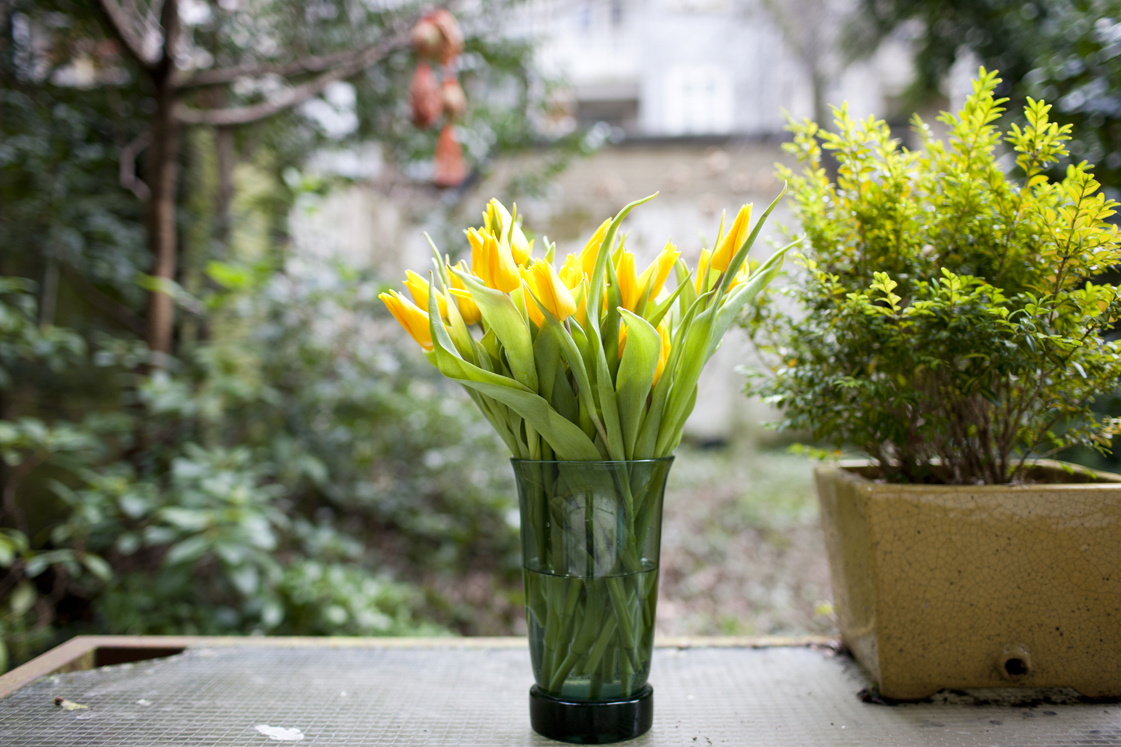
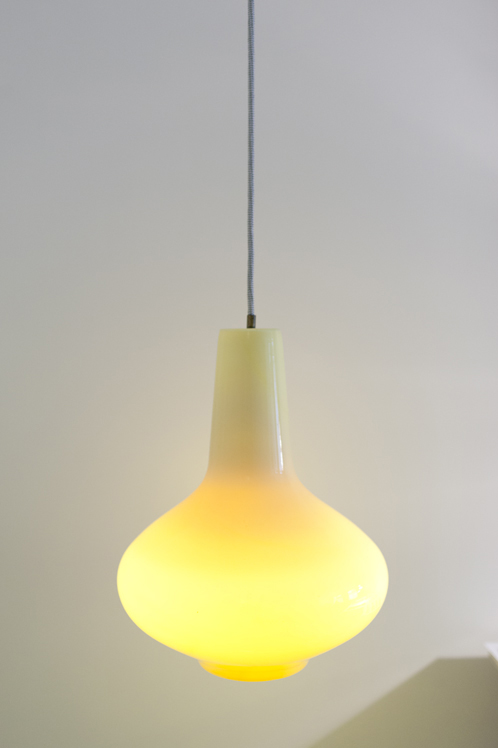
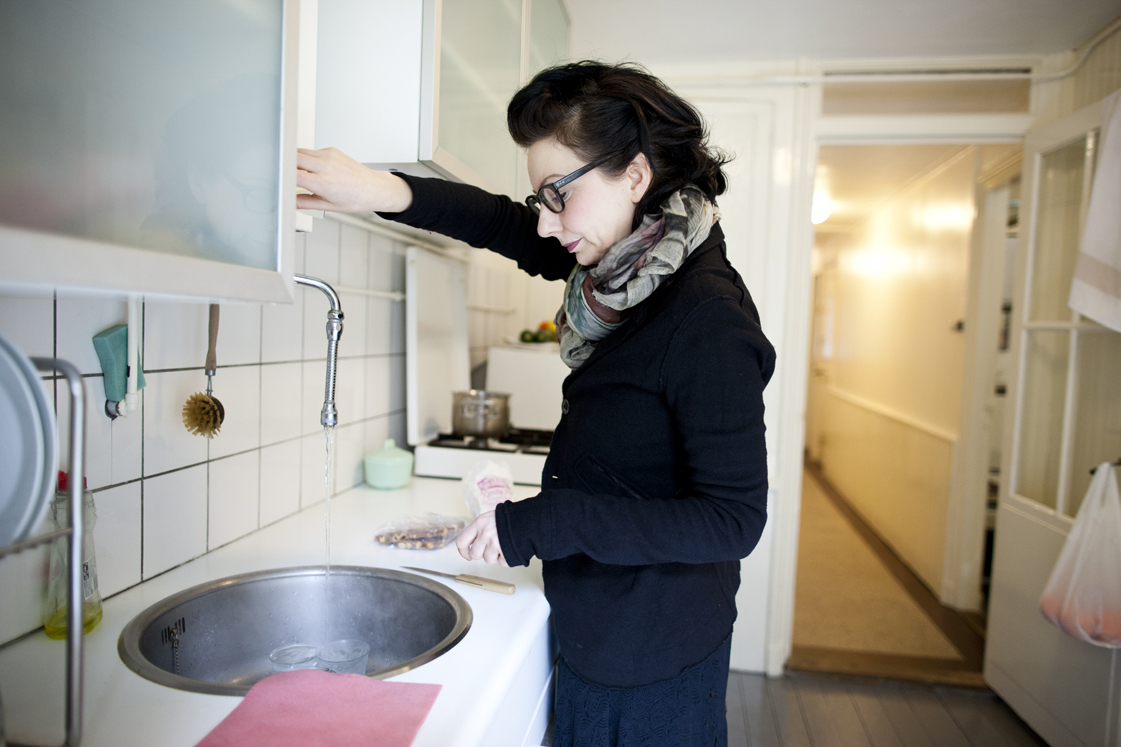
Your apartment has an air of minimalism; aside from a table, chairs, and a mini-couch the place could easily be mistaken for a gallery. Is there anything at all you would try to save if it burned down?
Sanne: Well it would definitely be emotional if our apartment were to go up in flames. I have been living here for sixteen years, the house bears many memories. But indeed there are not many objects worth saving. I would try to bring as many photo negative books with me as possible. Those are irreplaceable. And the little dear antler, and also the old American mourning cards that are part of my current project.
Michaël: I cannot think of anything. I consider myself an urban nomad, and feel most comfortable when I can move everything in one go in a small trailer. Maybe I would bring my hard drive with all my projects. But actually I have a back up at my studio, no need to save that one either. My collection of art works is the only thing worth saving, I think. Although the collection is also well documented.
You obviously prefer your place quite and sober. How do you keep it this way?
Sanne: I have always kept my apartment sober. But when Michaël moved in, the place turned even more minimal. Instead of moving a load of stuff into this apartment, he actually threw half of the interior out.
Michaël: I like it this way. I grew up in the art gallery of my dad, so to me this feels natural.
Sanne, physical space plays an important role in your photographic work. Can you explain why space is important to you?
Sanne: Nature is terrifying. It is dangerously vast and enormously complex. Culture is much easier than nature. Through my work I explore the concept of nature. Using large long-focus lenses I cut out pieces of the landscapes I see. The sky is often absent, which makes my images very oppressing.
Michaël: Sanne has an explorative way of working typically resulting is very large bodies of works.
You also did a project on the A-bomb, which resulted in the exhibition Black Noise [A Trinity Trilogy]. Is there a relation with you fear of nature?
Sanne: Like nature, the A-bomb is terrible and beautiful at the same time. It is the juxtaposition, the sublime, which interests me.
Michaël: The threat of annihilation is fascinating. There is a flirt with nostalgia in it.
Sanne: In my work I try to grasp physical objects and landscapes in relation to their history. Knowing what happened at a particular place provides extra layers. A tree standing in central Hiroshima for instance is perceived differently than one in my backyard.
Michaël, your studio just off Dam square has also a fair bit of history to it. Writer and visual artist Jan Cremer used to work there. Does its history have any significance to you?
Michaël: The studio indeed has a history. Breitner, a famous Dutch painter, already immortalized this building in some of his paintings. And I took over the studio from Jan Cremer, who had moved there after his time in the notorious Chelsea Hotel. When I got the place it was filled with memorabilia. There were Chelsea Hotel soaps next to the sink. Manuscripts of Cremer were left in a cupboard, as was his old typewriter covered with dust. It was a Cremer museum.
But it is not so much the history that makes the place special to me. The light is amazing. I get sun light all day in a continuous changing composition.
You have a remarkable nameplate on the door of your studio. A bunch of numbers instead of a formal notification?
Michaël: As a graphic designer I had a tendency to change my corporate identity every year. The numbers on my door or combinations of them make up all the days of my life until 2054, so I will never have to change my identity again. In case I get really old, it needs a couple of extra figures.
You collaborate on some projects. How do you combine your personal and professional relationship?
Sanne: Michaël is my graphic designer. He creates the designs of my books and exhibitions. As Michaël mentioned my projects are quite extensive, and normally benefit from his structuring approach.
Michaël: Because of our personal relationship I am able to understand Sanne’s work and comprehend her intentions. As a graphic designer I am able to use this knowledge in order to stress the essence of her work. I can make a work get noticed with a strong design. If you think of the creative process as an hourglass, with numerous ideas pouring in at the top and the final result taking shape at the bottom, the graphic designer should be positioned in the neck of the hourglass. You combine a connection with the artist with expertise on how a book or exhibition is produced.
When working with Sanne I feel more strongly committed, than when working for regular clients. The cooperation has more depth.
Sanne: We try to keep these projects professional though. We make appointments for meeting, and try to leave room for critique without taking it personal.
Is working together also challenging?
Sanne: Sometimes I protest against changes or ideas Michaël comes up with, of course. But a little protest is natural and healthy. And in the end I know that the project generally will benefit from his interventions.
Michaël: There is typically friction along the way. But the final product benefits from friction and discussion. The process of getting there is also important.
How do you describe your autonomous work?
Michaël: Explorative. Most projects start with something I find fascinating. I explore it in all its dimensions, and sometimes it results in a project. Currently I am fascinated by cross-written letters. In the 1930s there was a huge paper shortage, forcing people to use paper creatively. One solution was the cross letter: sentences were written perpendicular on top of each other, therewith doubling the content. These letters are so beautiful. Maybe they will result in a project.
Sanne: Research is also key to my work. I try to add layers to reality but at the same time try to obscure it.
Sanne, you work in the United States often. Do you have a special connection with the USA?
Sanne: It is love and hate. The country’s contrasts are so strong: misery and unlimited creativity coexist. It is a country rich of subjects.
Would you prefer living in the USA over Amsterdam?
Michaël: I lived in New York for four years before Sanne and I met. I immediately felt at home in NY, and it was fairly easy to get work because Americans show great interest in Dutch designers. Amsterdam, on the contrary, never feels like home the way NYC did. But Amsterdam is the right place to be professionally. Not everything is commercialised, which leaves room for autonomous projects.
Sanne: Amsterdam indeed has the right balance. For me the city and its central location in the Netherlands are ideal for my commercial work, which among other stuff involves theatre photography.
Michaël: I think we will stay here for some time; no plans for moving.
For further details on their respective works, have a look at Sannes and Michaëls websites!
Text: Thijs van Velzen
Photography: Jordi Huisman
